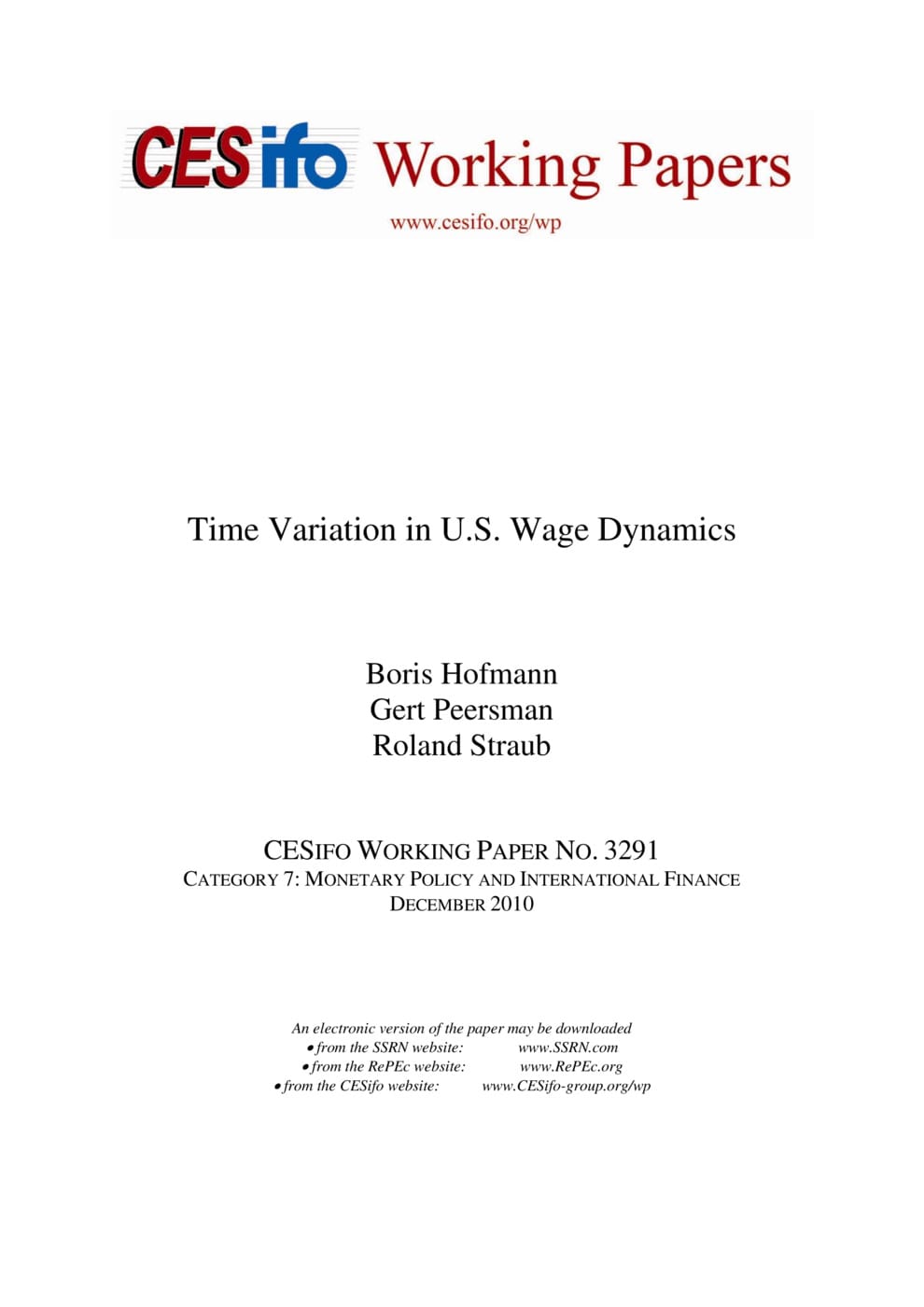Time Variation in U.S. Wage Dynamics
CESifo, Munich, 2010
CESifo Working Paper No. 3291

This paper explores time variation in the dynamic effects of technology shocks on U.S. output, prices, interest rates as well as real and nominal wages. The results indicate considerable time variation in U.S. wage dynamics that can be linked to the monetary policy regime. Before and after the "Great Inflation", nominal wages moved in the same direction as the (required) adjustment of real wages, and in the opposite direction of the price response. During the "Great Inflation", technology shocks in contrast triggered wage-price spirals, moving nominal wages and prices in the same direction at longer horizons, thus counteracting the required adjustment of real wages, amplifying the ultimate repercussions on prices and hence increasing inflation volatility. Using a standard DSGE model, we show that these stylized facts, in particular the estimated magnitudes, can only be explained by assuming a high degree of wage indexation in conjunction with a weak reaction of monetary policy to inflation during the "Great Inflation", and low indexation together with aggressive inflation stabilization of monetary policy before and after this period. This means that the monetary policy regime is not only captured by the parameters of the monetary policy rule, but importantly also by the degree of wage indexation and resultant second round effects in the labor market. Accordingly, the degree of wage indexation is not structural in the sense of Lucas (1976).
Monetary Policy and International Finance
Labour Markets